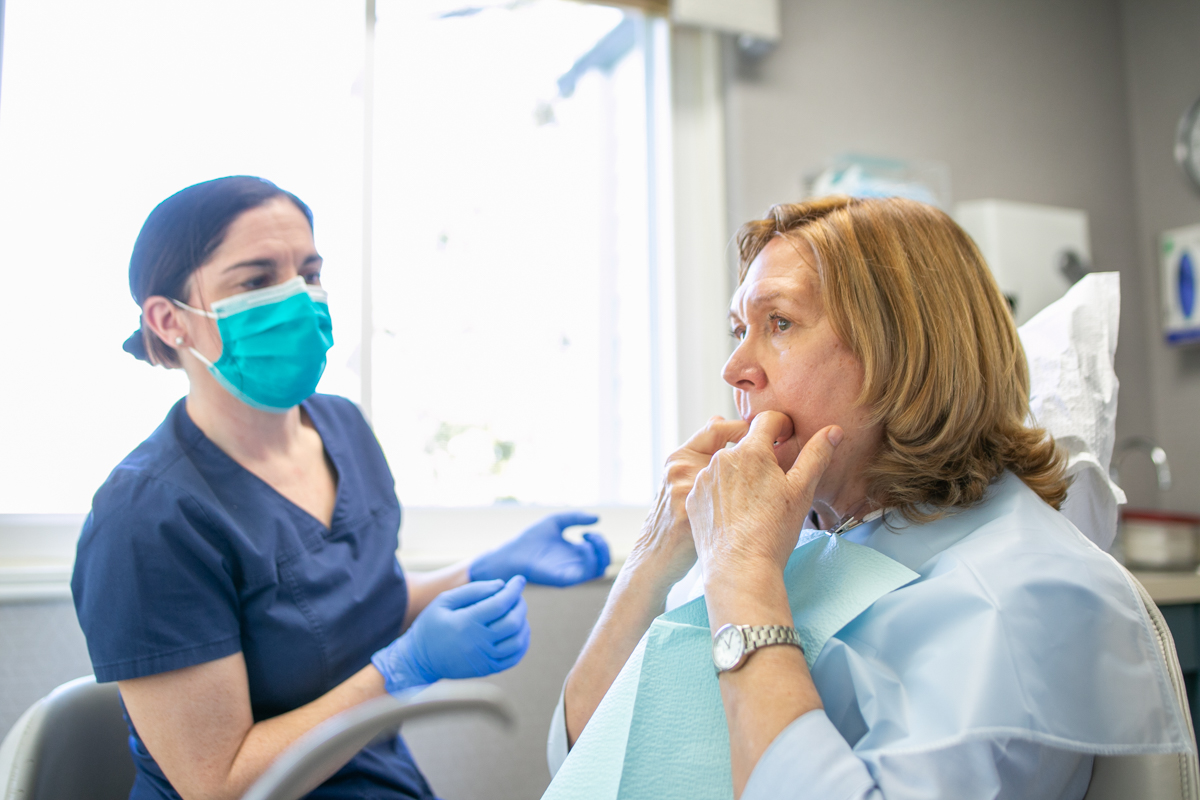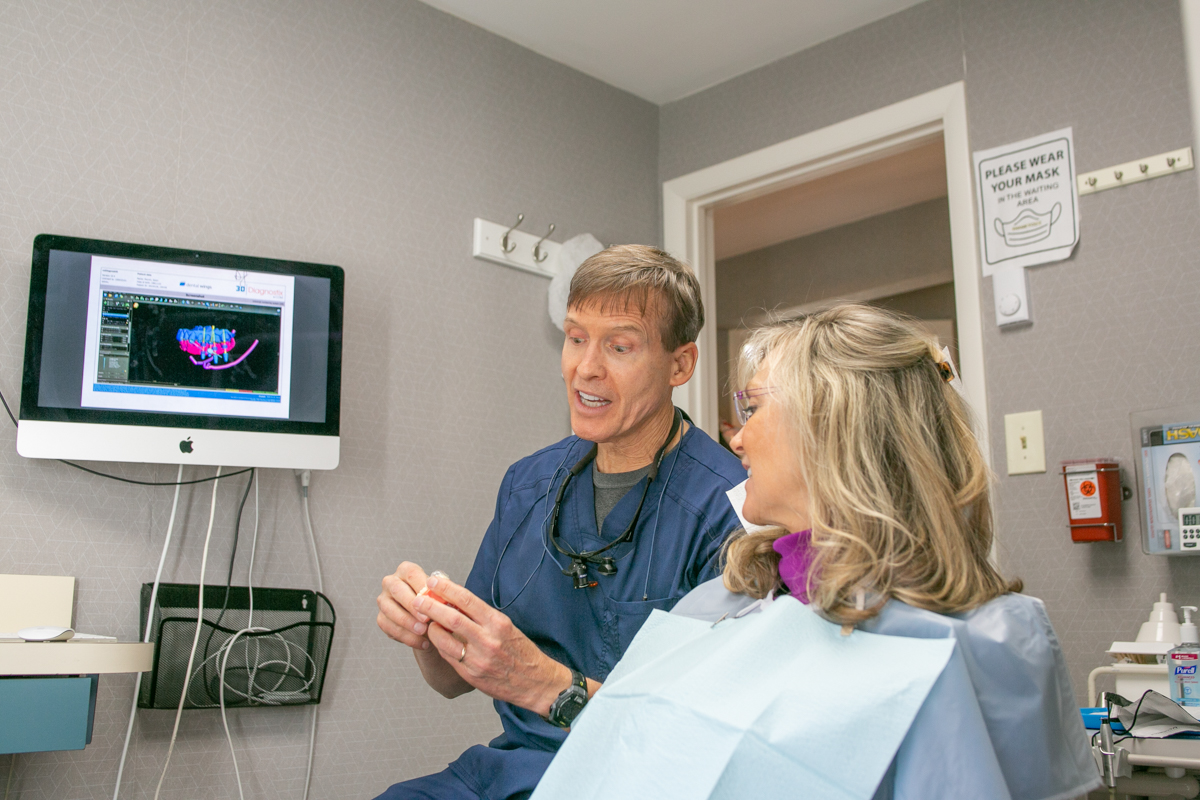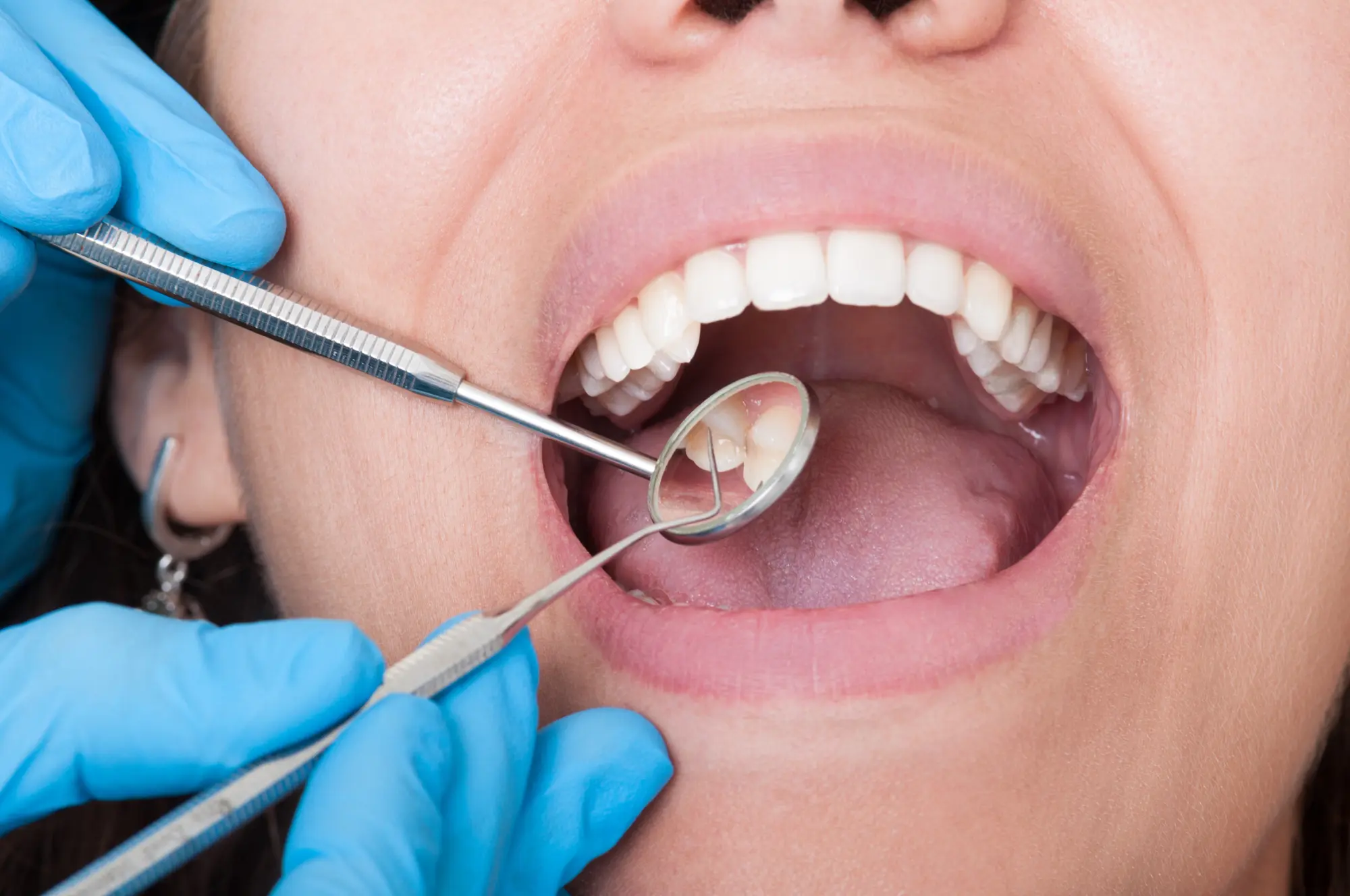

What is Restorative Dentistry?
Restorative dentistry is all about bringing damaged or missing teeth back to full function and beauty. Whether you're dealing with a simple cavity, a broken tooth, or missing several teeth, the right restorative approach can dramatically improve your comfort, confidence, and quality of life. Our goal is always to preserve as much of your natural tooth structure as possible while providing restorations that look, feel, and function like they've been part of your smile all along.


Benefits of Cosmetic Dentistry
A Smile That Reflects Your History
At McCarl Dental Group, we believe your smile should feel like you. Cosmetic dentistry lets us refine what’s already beautiful—brightening, balancing, or reshaping with subtlety and intention. Whether you're getting ready for a big life event or simply want to feel more confident day to day, we help you achieve a look that feels authentic and timeless.
Naturally Beautiful, Never Overdone
We take a conservative approach to cosmetic care. That means enhancing your smile in ways that look effortless—never artificial. With decades of experience and an in-house lab, we meticulously match shades, shapes, and proportions so your final result fits your features and feels like a natural extension of you.
Long-Lasting Results, Backed by Legacy
With proper care, cosmetic treatments like veneers, bonding, and Invisalign can offer results that last for years—sometimes decades. And at a practice that’s been serving Greenbelt families since 1924, you can trust that we’ll be here to support your smile for the long haul.
The Cosmetic Dentistry Process
Your experience begins with a warm welcome from our team—and a conversation centered around you. During this visit, we’ll ask what you love about your smile, what’s been bothering you, and what kind of changes you’re hoping to see. Maybe you’re preparing for a big event, or maybe you’re just ready to feel more confident when you look in the mirror. Either way, we’ll take the time to understand your vision, walk you through available treatments, and answer any questions you have—without pressure. Our goal is to help you feel informed, empowered, and excited about the possibilities.
Once we’ve talked through your goals, we’ll start mapping out your treatment. Using tools like iTero digital scans and photography, we’ll evaluate your bite, tooth structure, and facial features to ensure any cosmetic changes are in harmony with your overall look and oral health. If you’re considering a smile makeover or veneers, we may show before-and-after cases or create digital previews to help you visualize your future smile. We’ll explain each step clearly, and make recommendations that fit your lifestyle and timeline—whether you want fast results or a gradual transformation.
With your plan in place, we’ll move forward with treatment at a pace that feels comfortable for you. Some services—like take-home whitening or minor bonding—can be completed in a single visit. For more involved procedures like veneers or Invisalign, your treatment may span several appointments to ensure precision and long-term success. Thanks to our in-house milling capabilities and long-standing lab partnerships, we’re able to deliver beautiful, custom results with exceptional quality and craftsmanship. Throughout your care, we prioritize your comfort, offering neck pillows, blankets, and serene views of our garden from every operatory.
After your cosmetic treatment is complete, we’ll review everything together to make sure you’re happy with the outcome—and provide expert guidance on how to keep your smile looking its best. This may include care tips, touch-up recommendations, or a plan for ongoing maintenance. Because McCarl Dental Group has been a trusted part of the Greenbelt community for nearly a century, you can count on us to be here when you need us—whether that’s for future enhancements, cleanings, or simply to answer your questions along the way. Our relationship doesn’t end when your smile transformation does—we’re here to support your confidence for the long term.


Our Restorative Treatments
Our composite resin fillings blend seamlessly with your natural tooth color while effectively repairing cavities. Beyond their obvious aesthetic advantage, these modern fillings bond directly to your tooth structure, providing excellent support and requiring less removal of healthy tooth tissue.
This tooth-saving procedure removes infected or damaged pulp from inside your tooth, eliminates pain, and allows you to keep your natural tooth for years to come. With our gentle approach and effective numbing techniques, most patients are surprised by how comfortable the process actually is.
Why wait weeks for a crown when you can have one in hours? Using our in-office CEREC technology, we design, mill, and place your permanent crown in a single visit. No goopy impressions, no temporary crowns, and no return trips—just one efficient appointment that fits your busy schedule.
A bridge fills the gap left by missing teeth with lifelike replacements anchored to the natural teeth on either side. This prevents remaining teeth from shifting, restores your ability to chew comfortably, and gives you back a complete, confident smile.
We create custom full and partial dentures that fit comfortably, function reliably, and look remarkably natural. Whether you're missing several teeth or a complete arch, we'll help you find the solution that best restores your smile and confidence.
The gold standard for tooth replacement, implants provide a permanent foundation for crowns, bridges, or dentures. From single tooth replacements to full-mouth restorations, our comprehensive implant services include precision planning with 3D imaging, guided placement for optimal results, and beautiful restorations that complete your smile.
Sometimes tooth loss leads to deterioration of the jawbone, making implant placement challenging. Our bone grafting procedures rebuild this crucial foundation, creating adequate support for future implants and helping maintain facial structure.
While saving teeth is always our priority, sometimes removing a tooth is the best option for your health and comfort. Whether you're dealing with extensive decay, infection, or impacted wisdom teeth, our gentle approach and sedation options make the extraction process as comfortable as possible.
Dental emergencies rarely happen at convenient times. That's why we reserve space in our schedule each day for urgent care. From severe toothaches to broken teeth or lost restorations, we'll address your pain quickly and develop a plan to fully resolve the problem.
Frequently asked questions
How do I know which restorative option is best for my situation?
Every smile is unique, and so is every treatment plan. During your consultation, we'll discuss your specific concerns, goals, and preferences. We'll explain all appropriate options, including the benefits, considerations, and investment for each. Using digital imaging, we can even show you what different approaches might look like, helping you make an informed decision that fits your needs and budget.
Is restorative dental work painful?
This is one of our most common questions, and we're happy to say that modern dentistry has come a long way. We use highly effective local anesthesia techniques to ensure you're comfortable throughout any procedure. For longer treatments or patients with dental anxiety, we offer nitrous oxide sedation to help you relax. Our gentle approach, combined with our unique, homelike setting and those calming bird feeders outside each window, helps create a surprisingly comfortable experience even for the most nervous patients.
How quickly can I get back to normal activities after restorative work?
Most restorative procedures have minimal downtime. For fillings, same-day crowns, and even root canals, you can typically return to normal activities immediately, though we recommend waiting until numbness wears off before eating. For more involved procedures like extractions or implant placement, we usually suggest taking it easy for the rest of the day, but most patients return to work or school the following day. We'll always provide clear, personalized aftercare instructions and are just a phone call away if you have any concerns during your recovery.
